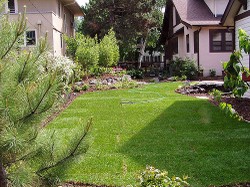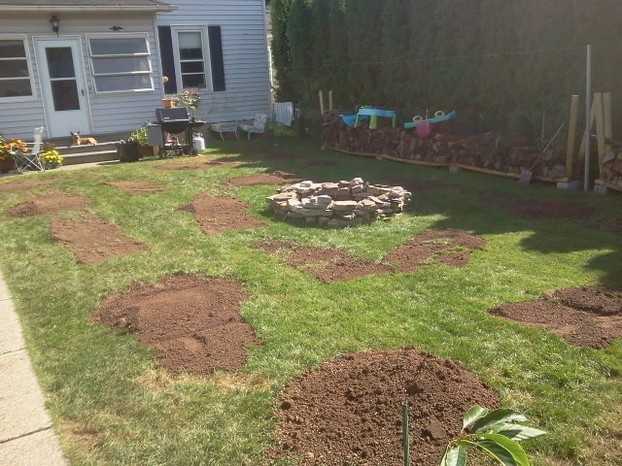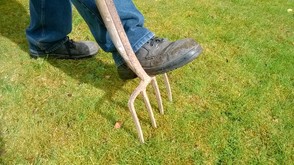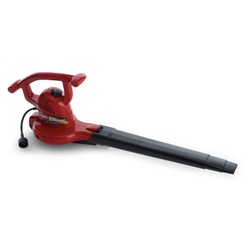Spring is finally here and it's time for garden spring cleaning and maintenance. After the long and cold winter lawns often look uneven, with bald patches and big holes. It's to do some levelling and improve the condition of your lawn. Let's see what are the main causes of lawn unevenness and how to prevent it. You will also learn how to prepare your lawn for levelling and how to actually do it.

Easy Solutions for Levelling Lawns
What are the main reasons for an uneven lawn, how to prepare your lawn for levelling and how to do it.
Most Common Reasons for an Uneven Lawn
Before you start with the levelling, first you need to identify the reason for the bumps or depressions in your lawn. Usually, these are:
- Animals - Animals, be it your neighbours' dogs and cats, or some wild critters such as foxes who venture on urban exploration in their search for food, can do a lot of damage to your lawn.
- Rough Play -If your children are using your garden as a playground, they can also do quite some damage in the months when it is most vulnerable. Stomping little feet can put a large amount of pressure on your green patch, damaging not only the grass but also affecting the surface.
- Nightcrawlers - It's hard to believe the amount of damage these pesky little creatures can cause – they like to keep busy digging around your garden and may end up shifting between 20 and 25 tons of soil per acre every year. One of the easiest solutions to deal with these critters is to keep the pH level of your soil low.
- Waterlogging - The elements are also at play in your garden, especially during the winter, causing lumps and bumps to appear in your lawn. If you let surface water stay on your lawn for too long, it can cause long-term damage. Good drainage is crucial in preventing this.
- Soil Settlement - Your lawn can be affected not just from above. Rocks, pipes, and debris beneath the soil can also damage the composition of your lawn. To prevent this, you need to excavate the affected areas and break up the underlying rubble.
Other reasons behind bumps and depressions in the lawn can be due to wear and tear, mole damage, and drought or frost.
Preparing to Level Your Lawn
 Regardless of the cause of you uneven lawn, before you set about repairing it, make a thorough inspection to determine how much of it needs levelling and if there are any existing drainage problems. If you notice low spots around water pipes, consult a professional before you take on any other course of action. If you have drainage issues, you will not only need to level the lawn, but have it re-graded as well. This will help with proper drainage and prevent flooding.
Regardless of the cause of you uneven lawn, before you set about repairing it, make a thorough inspection to determine how much of it needs levelling and if there are any existing drainage problems. If you notice low spots around water pipes, consult a professional before you take on any other course of action. If you have drainage issues, you will not only need to level the lawn, but have it re-graded as well. This will help with proper drainage and prevent flooding.
When to Level Your Lawn
Before you get to the "How?", you first need to ask "When?" For best results, it is highly recommended that you wait for the growth period of grass, which varies according to the type of grass grown but normally occurs in spring and summer.
How to Level a Lawn Using Sand Mixture
When undertaking lawn levelling, many homeowners resort to sand. This, however, may turn out to be more of a problem than a solution. Never is a strong word but it should be used here – never use pure sand to level a lawn. With the clay contained in the turf, adding pure sand on top of it will only create further problems growing grass. The combination of clay and sand will affect negatively drainage properties, turning the soil into a nearly cement-like consistency.
Another disadvantage of sand is that it dries out very quickly in summer, leaving any grass growing on it struggling with the heat. Grass also becomes more vulnerable to drought and cold damage.
Instead of sand, use a dry topsoil and sand mix. It achieves a much better efficiency for levelling uneven areas than adding pure sand on a lawn.
How to Fill Uneven Lawn Ruts and Low Spots

To prepare a lawn patching soil, mix equal parts sand and dry topsoil. For low spots, apply the mixture directly onto the surface. Use a rake to spread it evenly. Compact the soil with the flat side of the rake and your feet. To aid compaction, slightly wet the soil and leave it to settle. You can also use compost to enrich the soil. Some low areas in the lawn may still be visible but it’s best that you allow the grass to grow up through the soil for at least a month before repeating the process.
To fill deeper areas of the lawn, which have sunk more than 2 cm, you will have to first remove the grass. Using a squared-off shovel, cut right through the centre and beyond the edges of the hollow to about 4-5 cm. Fill in the depression with soil mix, then lay the grass back in place. Water and fertilise thoroughly.
You might also like
Easy tips for winterizing a lawnmowerClean filters and other important stuff, lubricate all the parts, sharpen mow...
The best electric leaf blower vac your money will buyA good electric leaf blower vac is a must have lawn clean up tool for several...










Comments